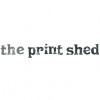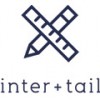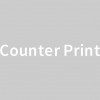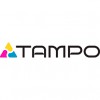
Artist owned dedicated Printmaking Workshop set in delightful rural location six miles west of Hereford city. The Print Shed is suitable for monoprint, collagraph, carborundum print, etching, lino block, solar plate printing, drypoint and other related processes. The peaceful setting will allow you some 'metime'. The use of safe and environmentally friendly materials is strongly promoted.
There are two studio areas, one houses a Relief Imperial Press, an 1834 chunk of cast iron which can be used for lino printing block, wood engraving and letterpress images. It has also been successfully used to block print on to fabric. The second area holds a large Rollaco Etching Press. There is a useful little kitchen area, a separate area with ventilation for using white spirit.
There are toilet facilities. A landscape painter specialising in trees and woodland, Richard seeks to capture the character and atmosphere of particular places in all weathers and seasons. He is an invited member of The Arborealists, a national and increasingly European group of artists united around the theme of trees.
There are two studio areas, one houses a Relief Imperial Press, an 1834 chunk of cast iron which can be used for lino printing block, wood engraving and letterpress images. It has also been successfully used to block print on to fabric. The second area holds a large Rollaco Etching Press. There is a useful little kitchen area, a separate area with ventilation for using white spirit.
There are toilet facilities. A landscape painter specialising in trees and woodland, Richard seeks to capture the character and atmosphere of particular places in all weathers and seasons. He is an invited member of The Arborealists, a national and increasingly European group of artists united around the theme of trees.
Services
Large airy studio on the ground floor equipped with a modern intaglio press, the press is geared so very easy to use.
Newly refurbished 7 metre by 3.5 metres space which houses the Relief press, courses will be run from this ground floor space.
This space houses the Etching Press - the area is 5 metres by 3.5metres, there is a clear workstop running along the long wall providing plenty of space for inking your plates.
The Print Shed has off road parking, a picnic area in attractive gardens and for cooler days there is a choice of pubs nearby.
Newly refurbished 7 metre by 3.5 metres space which houses the Relief press, courses will be run from this ground floor space.
This space houses the Etching Press - the area is 5 metres by 3.5metres, there is a clear workstop running along the long wall providing plenty of space for inking your plates.
The Print Shed has off road parking, a picnic area in attractive gardens and for cooler days there is a choice of pubs nearby.
Photo-polymer plates were developed in the 1960s and the process was then established in the newspaper industries to replace the lead based plates being used.
Workers were then no longer exposed to the poisonous fumes generated.
In 1972 printmaker Dan Welden discovered that by exposing the coated plate to the sun he could make a high quality plate quickly - hence solar plate.
The special plate must be kept out of the sunlight and UV until it is ready to expose but is not affected by dim artificial light.
Workers were then no longer exposed to the poisonous fumes generated.
In 1972 printmaker Dan Welden discovered that by exposing the coated plate to the sun he could make a high quality plate quickly - hence solar plate.
The special plate must be kept out of the sunlight and UV until it is ready to expose but is not affected by dim artificial light.
Dried leaves, bark, textured wall paper; fabrics can all be inked up and printed directly.
No drawing, no fuss!
This is possibly one of the oldest methods of reproduction.
Hand printed seals and stamp decorations on metal and bricks appear in the East BC.
There is evidence of textile block prints in both China and India from around sixth to eighth centuries AD.
As in other relief techniques areas of the lino are cut away and the remaining raised surface is rolled with ink and printed.
To make a 'reduction' print - several pulls are made from the first cut on the lino.
No drawing, no fuss!
This is possibly one of the oldest methods of reproduction.
Hand printed seals and stamp decorations on metal and bricks appear in the East BC.
There is evidence of textile block prints in both China and India from around sixth to eighth centuries AD.
As in other relief techniques areas of the lino are cut away and the remaining raised surface is rolled with ink and printed.
To make a 'reduction' print - several pulls are made from the first cut on the lino.
There are lots of ways to make a monoprint.
Use a piece of thin plastic sheet or aluminium or zinc plate.
The printing plate should have a smooth surface which you can easily clean - as the surface will not altered it can be used again and again to make different images.
Why on earth make a 'one off' print?
It's just another way to make an image.
The marks transferred during the process are utterly different to painting or drawing.
Use water based printing inks or oil based products.
Make vibrant swathes of colour or delicate translucent shades, draw into the ink on the plate; try dropping white spirit into the oil paint, Roller the colours on, wipe areas off, use a cloth over the handle of your paint brush to move ink around.
Use a piece of thin plastic sheet or aluminium or zinc plate.
The printing plate should have a smooth surface which you can easily clean - as the surface will not altered it can be used again and again to make different images.
Why on earth make a 'one off' print?
It's just another way to make an image.
The marks transferred during the process are utterly different to painting or drawing.
Use water based printing inks or oil based products.
Make vibrant swathes of colour or delicate translucent shades, draw into the ink on the plate; try dropping white spirit into the oil paint, Roller the colours on, wipe areas off, use a cloth over the handle of your paint brush to move ink around.
A Collagraph print is one made from a plate collaged with different textures.
A base plate of mountcard or the reverse side of old etching plates can be used.
The process is a combination of intaglio and relief.
Collage your plate with texture by gluing on wallpaper or torn cardboard shapes with PVA wood glue.
Use a variety of tapes - shiny parcel tape, different masking tape can be overlapped to create an interesting variety of marks.
Draw with a biro, pencil or cutting knife, into the surface of the plate, or run your pizza cutting wheel over it to make interesting lines.
A base plate of mountcard or the reverse side of old etching plates can be used.
The process is a combination of intaglio and relief.
Collage your plate with texture by gluing on wallpaper or torn cardboard shapes with PVA wood glue.
Use a variety of tapes - shiny parcel tape, different masking tape can be overlapped to create an interesting variety of marks.
Draw with a biro, pencil or cutting knife, into the surface of the plate, or run your pizza cutting wheel over it to make interesting lines.
Reviews

Be the first to review The Print Shed.
Write a Review



